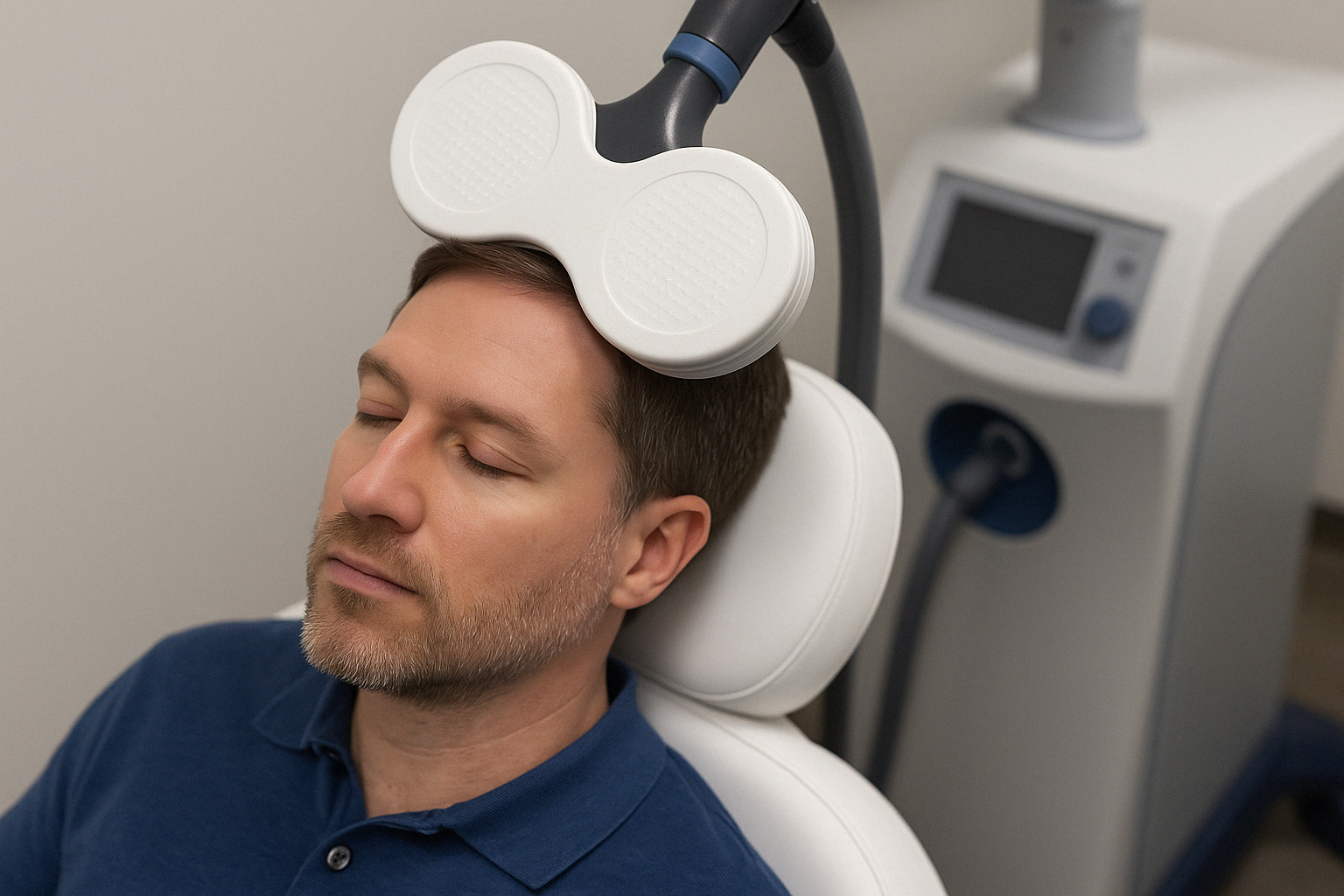The Technology of Healing: How TMS Treats Major Depression
Every day, millions of Americans silently battle a dangerous and debilitating condition: Major Depressive Disorder (MDD). While it’s often invisible to others, depression can rob a person of joy, purpose, and the ability to function. And for many people in Phoenix, Glendale, Scottsdale, and Gilbert, traditional medications just haven’t worked. This is where science brings hope—through a revolutionary therapy called Transcranial Magnetic Stimulation (TMS). If you’ve been searching for answers, or want to understand TMS for major depression and how TMS works for depression, you’re in the right place.
“Mental illness is nothing to be ashamed of, but stigma and bias shame us all.” – Bill Clinton
Depression is more than feeling sad. It can lead to serious consequences including substance abuse, job loss, damaged relationships, and even suicide. According to the National Institute of Mental Health, in 2021, over 21 million U.S. adults had at least one major depressive episode. And nearly one-third of those didn’t respond to antidepressants or talk therapy. This is called treatment-resistant depression—and it’s far more common than you might think.
But there’s good news: science has uncovered new ways to treat depression without medication. One of the most promising breakthroughs is TMS.
What Is TMS and Why Is It So Effective?
Understanding TMS for Major Depression
Transcranial Magnetic Stimulation (TMS) is an FDA-approved, non-invasive procedure that uses magnetic pulses to stimulate areas of the brain responsible for mood regulation—especially in people with major depressive disorder. Unlike medications that affect the whole body and can cause unwanted side effects, TMS directly targets the source of the problem: the brain’s neural activity.
TMS works by using a coil placed on the scalp to send gentle magnetic pulses into specific areas of the brain—most often the left dorsolateral prefrontal cortex, which is often underactive in people with depression. These pulses help “wake up” these areas, restoring normal brain function over time.
How TMS Works for Depression: The Science Behind It
Let’s break it down simply. Your brain is full of electrical signals. When you’re depressed, some areas don’t communicate properly. TMS helps “reboot” these regions by sending short bursts of magnetic energy that:
- Increase activity in areas of the brain responsible for positive mood
- Improve communication between brain circuits
- Reduce symptoms of depression over time
And yes—it really works. According to research published by the American Journal of Psychiatry, over 60% of patients with treatment-resistant depression experienced significant improvement with TMS. About one-third went into full remission.
Why TMS Is a Game-Changer in Phoenix
The Rise of Mental Health Needs in Phoenix
Phoenix and the surrounding areas like Gilbert, Glendale, and Scottsdale have seen a rising demand for effective mental health services. The warm climate doesn’t shield residents from the emotional coldness that depression brings. In fact, the Arizona Department of Health Services reported an increase in mental health-related hospital visits by over 15% in the last five years.
This has pushed forward-thinking clinics like Bella Vida TMS to invest in cutting-edge treatments like TMS therapy, especially for those suffering from major depression who haven’t found relief through traditional means.
Who’s a Good Candidate?
You might be wondering if TMS is right for you or someone you love. Generally, TMS is a great option for:
- Adults diagnosed with major depressive disorder
- People who haven’t had success with two or more antidepressants
- Individuals who experience side effects from medication
- Veterans, professionals, and others looking for drug-free treatment options
TMS is not electroconvulsive therapy (ECT). It doesn’t require sedation, and there’s no memory loss. In fact, most patients go back to work or school right after their sessions.
Benefits of TMS vs. Traditional Treatments
Fewer Side Effects
Unlike medications, TMS doesn’t cause weight gain, sexual dysfunction, nausea, or fatigue. The most common side effect is mild scalp discomfort during treatment—and even that fades over time.
Long-Lasting Results
TMS offers not just temporary relief but long-term improvement. Clinical studies show that many patients continue to feel better even a year after treatment.
Completely Non-Invasive
There are no surgeries, no needles, and no drugs. TMS is done in-office, and sessions typically take 20 to 40 minutes, five days a week for 4 to 6 weeks.
There Is Hope
Depression is a serious, life-altering condition—but it’s also highly treatable. Thanks to the advances in neuroscience, we now understand more than ever about how the brain works and how we can help it heal. TMS therapy stands at the front of this scientific revolution, offering lasting results for those who once felt out of options.
If you or someone you know is struggling with major depressive disorder, consider TMS. It’s safe, effective, non-invasive, and available right here in Phoenix.
“The greatest weapon against stress is our ability to choose one thought over another.” — William James
With TMS, you don’t have to keep choosing between suffering in silence or dealing with medication side effects. You now have a third option—one backed by science, embraced by doctors, and changing lives every day.
Sources
- Major depressive disorder, recurrent F33
- National Institutes of Health – Major Depressive Disorder – StatPearls
- National Library of Medicine – Transcranial Magnetic Stimulation for Post-traumatic Stress Disorder


